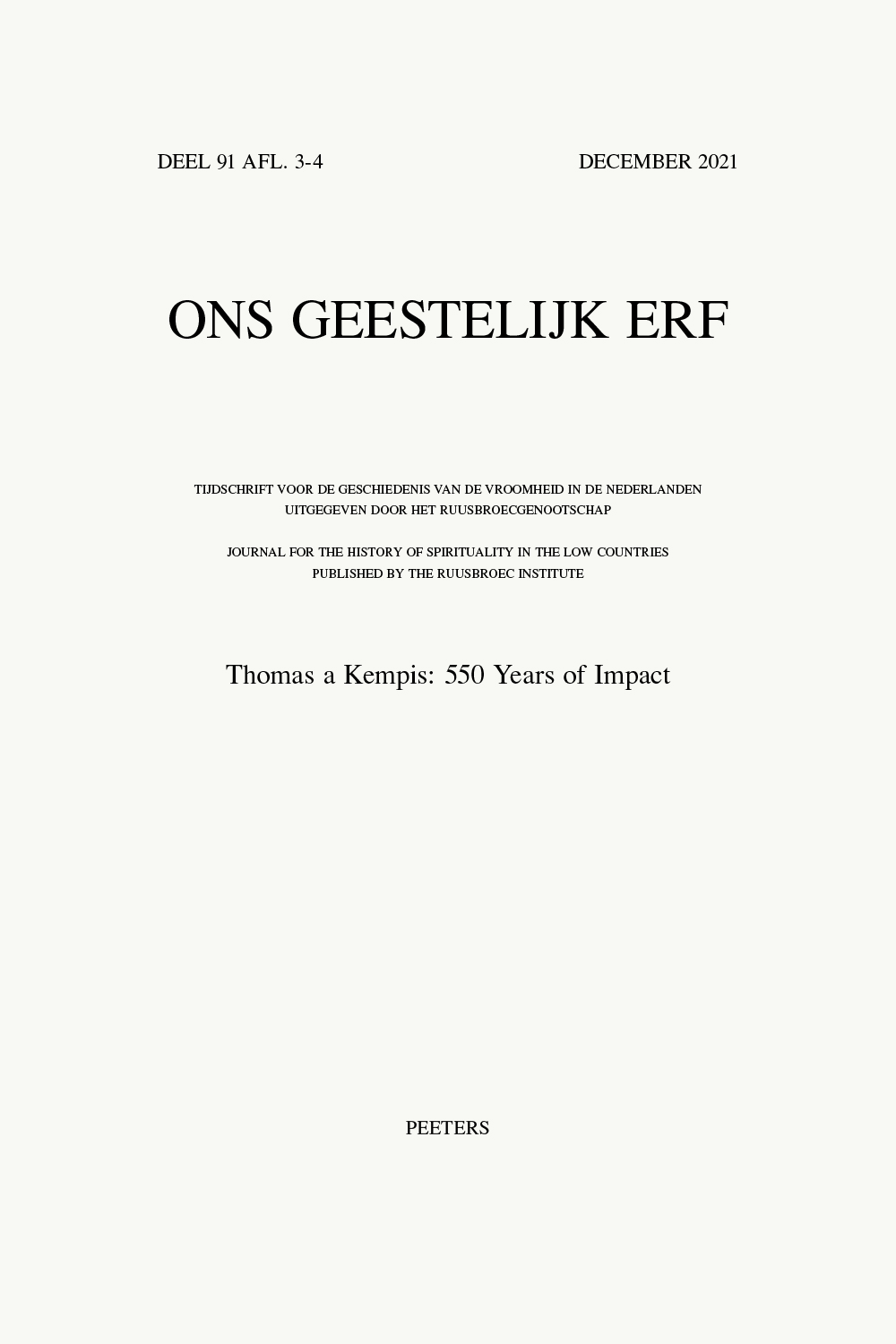 previous article in this issue previous article in this issue | next article in this issue  |

Preview first page |
Document Details : Title: Das Buch von den Neun Felsen Subtitle: Ein Wegweiser für Taulers via mystica? Author(s): LINGSCHEID, Claudia Journal: Ons Geestelijk Erf Volume: 84 Issue: 1 Date: Maart 2013 Pages: 74-95 DOI: 10.2143/OGE.84.1.2975524 Abstract : The ‘Book of the Nine Cliffs’ (Neunfelsenbuch) is a medieval German text of visionary content. Up to now research counted it among the mystical writings of the so-called ‘Friends of God’. The text is transmitted in two recensions, namely a longer version and a shorter version, both of which claim to have originated in the year 1352. The question regarding original form and authorship has never been satisfactorily answered. It was held that the author could be identified as Rulman Merswin, the founder of the Strasbourg Commandery of the Knights of St John, known as the ‘Grüner Wörth’, in 1367. After Merswin’s death in 1382, his protégé Nicolaus of Leuven claimed to have found the autograph of the longer version among his papers. Based on a comparison of the shorter version with the longer one in 1902, Philipp Strauch reached the conclusion that Merswin had merely amplified an already existing text and that the shorter version was thus the original. His comparison, however, was not thorough enough to provide conclusive evidence. My analysis offers new evidence for the interrelationship of the two texts by investigating how they were influenced by the mystical sermons of Johannes Tauler, who was Rulman Merswin’s confessor. Both versions of the Neunfelsenbuch share strong links with the writings of Tauler; his mystical ideas and specific vocabulary are consistently present. Furthermore, the literary and structural parallels are sometimes so obvious that individual sermons of Tauler can be shown to have served as models. In general, the longer version contains the greater number of passages that can be paralleled in Tauler’s sermons. This leads to the conclusion that the longer version was in fact the original. Regardless of the question as to which version came first, the fact that both versions are influenced by the mysticism of Johannes Tauler proves that the Neunfelsenbuch was originally written in German and not in Dutch, as the oldest preserved manuscript of the shorter version might suggest. The author must certainly have been an attentive recipient of Tauler. The Neunfelsenbuch, which was composed during Tauler’s lifetime, can thus be shown to be one of the earliest attestations for the reception of his work. |
|


